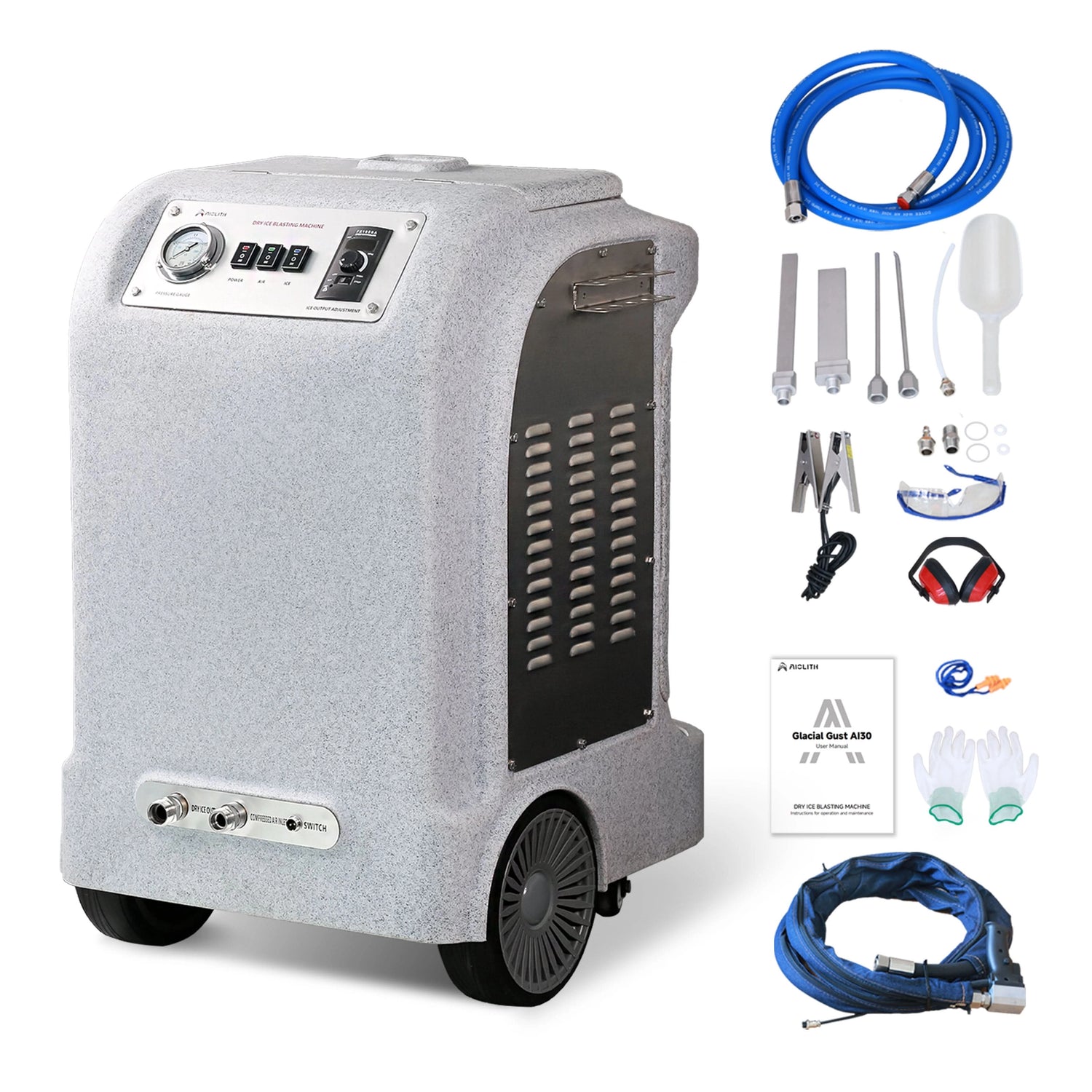How to Scrub Floors Without a Mop: 7 Smart Alternatives That Save Time, Reduce Effort, and Why Aiolith Floor Scrubbers Are the Professional Choice
Share
The Pain Point: Why Mops Don’t Deliver Professional Results
Many homeowners and facility managers ask: “Why are my floors still dirty after mopping?” The truth is, traditional mops often spread dirty water instead of removing it. The Journal of Environmental Health (2019) reported that manual mopping often leaves behind up to 40% of surface contaminants, making it inefficient for hygienic cleaning (Journal Link).
For small spaces, alternatives like microfiber cloths or steam cleaners may work. But for large commercial areas, businesses turn to professional-grade scrubbers like Aiolith to achieve both deep cleaning and faster drying times.
7 Alternatives to Scrubbing Floors Without a Mop
1. Microfiber Cloths by Hand
Microfiber cloths capture dirt more effectively than cotton. They’re great for small sections but labor-intensive for bigger spaces.
2. Floor Scrubbing Brushes
Handheld brushes with stiff bristles can dig into grout and textured flooring. While effective, this method can be exhausting on large areas.
3. Steam Cleaners
Steam loosens dirt and sanitizes without chemicals, ideal for kitchens and bathrooms. However, they’re not scalable for warehouses or schools.
4. Wet/Dry Vacuums
These vacuums can remove spills and dirt without mops. They’re excellent for industrial areas but lack scrubbing action.
5. Rotary Buffers
Common in professional cleaning, these machines polish and scrub, but require training and may not work well on all floor types.
6. Kneeling with Sponge or Cloth
A traditional method for stubborn stains. Effective in spot cleaning, but not practical for maintaining large floor areas.
7. Aiolith Commercial Floor Scrubbers
The professional’s top choice. These machines combine scrubbing, suction, and drying in one step, leaving floors spotless and safe.
Why Aiolith Floor Scrubbers Beat Manual Cleaning
Unlike manual methods, Aiolith scrubbers are designed for efficiency and consistency. They offer:
- Deep mechanical scrubbing to remove embedded dirt.
- Low-foam detergent compatibility for streak-free cleaning.
- Water recovery systems that leave floors nearly dry.
- Versatility across tile, vinyl, concrete, and sealed wood.
The Centers for Disease Control and Prevention (CDC, 2020) recommends mechanized cleaning methods for better infection control in healthcare and public environments (CDC Source).
Comparison Table: Floor Cleaning Without a Mop
| Method | Best Use Case | Advantages | Limitations |
|---|---|---|---|
| Microfiber Cloths | Small spills, home cleaning | Traps dirt effectively, reusable | Labor-intensive for big areas |
| Scrubbing Brush | Grout, textured floors | Deep scrubbing power | Hard on knees and back |
| Steam Cleaner | Bathrooms, kitchens | Sanitizes without chemicals | Not scalable for large facilities |
| Wet/Dry Vacuum | Industrial messes, spills | Removes water and dirt quickly | Doesn’t scrub deeply |
| Rotary Buffer | Polishing and deep cleaning | Covers larger floor space | Requires training, less versatile |
| Sponge/Cloth on Hands & Knees | Stains and corners | Targets stubborn dirt spots | Extremely tiring for wide areas |
| Aiolith Floor Scrubber | Commercial facilities | Cleans, extracts, and dries in one step | Higher upfront investment |
Why Mops Spread Dirt Instead of Removing It
Traditional mops absorb dirt but then reapply it with each rinse into dirty water. This is not only inefficient but also increases the risk of bacterial contamination. A study by Health and Safety Executive (HSE, 2020) revealed that poorly cleaned wet floors are a leading cause of workplace slip accidents (HSE Source).
By contrast, Aiolith scrubbers remove dirt and recover dirty water instantly, leaving a clean, dry surface.
The Environmental Edge of Using Aiolith Scrubbers
Manual cleaning methods often waste water and chemicals. The European Chemicals Agency (ECHA, 2022) suggests using eco-dosing machines to reduce chemical waste and water usage (ECHA Source).
Aiolith scrubbers follow this principle by using precise amounts of detergent, minimizing environmental impact while maintaining high cleaning efficiency.
Best Practices for Scrubbing Floors Without Mops
- Always sweep or vacuum first to remove loose debris.
- Use the right brush or pad depending on the floor type.
- Avoid excess water to reduce slip hazards.
- Disinfect high-traffic zones regularly with approved cleaners.
- Invest in professional machines like Aiolith scrubbers for commercial settings.
FAQs: How to Scrub Floors Without a Mop
Q1: Is scrubbing floors by hand better than mopping?
A: For small areas, yes. But for large spaces, it’s inefficient. Machines like Aiolith scrubbers are far more effective.
Q2: Can steam cleaners replace mops?
A: They can in small areas but are not scalable for larger commercial facilities.
Q3: Are Aiolith scrubbers safe for hardwood floors?
A: Yes, with the correct pad and detergent, they are safe for sealed hardwood and other surfaces.
Q4: Do professionals ever use mops?
A: Only in tight spaces or for quick spot cleaning. Larger areas rely on scrubbers.
Q5: Are floor scrubbers worth the investment?
A: Absolutely. While initial costs are higher, scrubbers reduce labor, water, and detergent expenses in the long run.
Conclusion: The Smarter Way to Scrub Floors Without a Mop
If you’re frustrated with mops leaving streaks or spreading dirt, it’s time to try smarter alternatives. While options like microfiber cloths and steam cleaners work in homes, Aiolith commercial scrubbers remain the gold standard for businesses that need efficiency, safety, and consistently clean floors.
By eliminating dirty water, reducing slip risks, and cutting down on chemical use, Aiolith scrubbers not only clean better but also provide long-term cost savings and sustainability benefits.
References
Journal of Environmental Health. (2019). Comparing manual vs. mechanical floor cleaning efficiency. Read here.
Centers for Disease Control and Prevention (CDC). (2020). Environmental cleaning and disinfection guidelines. Read here.
Health and Safety Executive (HSE). (2020). Preventing slips and trips at work. Read here.
European Chemicals Agency (ECHA). (2022). Cleaning product sustainability regulations. Read here.

